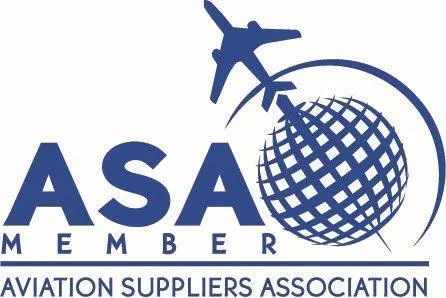
Building Stronger Aviation Networks Through Strategic Partnerships
Strategic partnerships unlock synergistic opportunities to reinforce aviation networks across airlines, lessors, and MRO organizations. Expert application of back-to-birth traceability and lifecycle documentation strengthens connectivity and enhances operational cohesion. Collaborative networks leverage shared platforms to validate component histories, optimize maintenance transitions, and uphold regulatory readiness. Strengthened aviation networks deliver heightened transparency and seamless asset mobility within complex supply chains.
Enhancing Compliance in Aviation Networks Through Collaborative Frameworks
Aligned documentation protocols across aviation networks foster consistency and regulatory conformity among partners. Shared standards for automated back-to-birth trace generation simplify verification during inspections and audits. Coordinated compliance processes reduce discrepancies and enhance readiness across interconnected entities. Collaborative traceability reinforces organizational accountability and strengthens industry-wide documentation integrity.
Strategic alliances in aviation networks can significantly reduce fragmentation and support unified operational standards. Shared platforms harmonize compliance workflows across carriers, lessors, and MROs, enabling streamlined data exchange and audit preparedness. Collaborative documentation architecture ensures seamless integration of provenance data across stakeholders.
Platforms that integrate digital traceability within networks facilitate automatic validation of historical records. Coordinated systems reduce manual intervention, improving accuracy and reducing compliance latency. Industry participants benefit from transparent information sharing, reducing bottlenecks during maintenance cycles and transitions. Harmonized digital frameworks also support faster response during unexpected operational shifts.
Accelerating Asset Transitions Within Aviation Networks via Shared Digital Ecosystems
Integrated aviation networks streamline component transfers between lessors, airlines, and MROs through unified digital documentation. Shared platforms reduce manual handovers and ensure consistent lifecycle visibility across transitions. Automated trace generation expedites audits and lease turnbacks, minimizing aircraft downtime.

Aviation partnerships leveraging digital documentation consistently report a reduction in transition delays in component transfer cycles. Shared systems facilitate immediate access to validated history, streamlining maintenance clearance and operational turnover. Aviation networks benefit from mutual trust and reduced administrative duplication, fostering seamless logistics. Transparent, interoperable frameworks improve overall turnaround efficiency and asset readiness.
Concerted digital infrastructure within networks addresses data fragmentation and regulatory friction points. Unified trace records enhance visibility during cross-entity maintenance, reducing the risk of incomplete documentation. Standardized digital exchange reduces misunderstandings and accelerates decision cycles during transitions. Integration across network partners strengthens operational resilience and supports adaptive scheduling.
Building networks around shared documentation platforms promotes scalability and operational fluidity. As component volumes increase and supply chains become more distributed, cohesive frameworks maintain consistency. Automated traceability infrastructure ensures each partner accesses accurate histories irrespective of previous handlers. Forward-leaning networks evolve through deep integration of digital lifecycle insights.
Strengthening Supply Chain Integrity Across Networks
Aviation networks underpinned by collaborative traceability frameworks deter unauthorized or counterfeit component circulation. Shared lifecycle documentation fosters mutual accountability and elevates supply chain security. Aviation networks built around trace validation reinforce confidence among inspection teams and regulatory authorities. Interconnected systems support detection of anomalies across distributed maintenance workflows.
Industry data reveals fewer than 1 percent of engine components were affected by documentation fraud amid a widely shared supply chain investigation, illustrating the impact of traceability lapses. Networked documentation platforms help contain such incidents by enabling rapid validation across partners. Aviation networks with integrated trace frameworks are better equipped to identify and quarantine suspect components. Shared provenance records fortify supply chain resiliency and safety.
Aviation networks benefit from unified visibility across maintenance and transfer operations. Common protocols for documentation allow prompt authentication and reduce risk exposure during component transit. Collated trace data empowers proactive risk management and root cause insights across partners. Broad adoption within networks reinforces overall supply chain transparency.
Collaborative traceability enhances not just compliance, but also strategic resilience across aviation networks. Stakeholders aligned on digital documentation practices coalesce around elevated safety norms. Shared trace networks drive cohesive operational standards and sustainable oversight across industry participants.
Facilitating Audits and Inspections Across Partnerships
Aviation networks built upon interoperable documentation systems enable efficient cross-entity audits and compliance assessments. Partnering organizations benefit when aircraft histories are instantly available in traceable, validated formats. Uniform documentation standards across aviation networks streamline audit scope and duration. Audit readiness thus becomes a shared capability rather than an isolated burden.
Shared data access enables parallel review by auditors representing multiple stakeholders. Verified histories across partnership layers improve regulatory confidence and reduce operational bottlenecks.

Cross-network audit integration demands robust data governance and access controls. Documented traceability frameworks safeguard sensitive information while enabling efficient shared review. Interconnected systems support tiered visibility based on partner roles and audit needs. Secure audit orchestration ensures regulatory integrity without compromising confidentiality.
Adaptability across audit regimes defines resilient aviation networks. Shared documentation architecture supports harmonization across differing regulatory jurisdictions. Centralized trace records accommodate multiple audit standards with localized visibility. Networked compliance ensures each participant aligns with evolving inspection demands.
Fostering Innovation and Growth
Collaborative digital ecosystems enrich aviation networks by catalyzing innovation across lifecycle documentation and traceability. Cooperative frameworks encourage co-development of advanced documentation protocols and shared tooling. Aviation networks leveraging shared digital solutions accelerate adoption of next-generation traceability capabilities. Shared infrastructure generates network effects through collective technical progress.
For example, public-private partnerships such as the CLEEN initiative demonstrate aviation networks accelerate sustainable technology deployment through collaboration, achieving over 500 million metric tons of carbon dioxide emissions reduction projected by 2050. Joint investment in infrastructure reinforces collective capacity for innovation. Networks aligned on documentation standards amplify impact of shared R&D efforts and enable scalable deployment. Cooperative systems therefore elevate operational agility and fuel ecosystem evolution.
Shared digital infrastructure also supports future capabilities such as blockchain-based provenance and integrated audit flows. These technologies gain traction faster when deployed across aviation networks rather than in silos. Shared infrastructure reduces development redundancy and lowers barriers for widespread adoption. Network-driven innovation fosters continuous modernization in traceability and compliance.
Build Strategic Partnerships with the Right Tech Team
Strategic partnerships grounded in shared traceability and lifecycle documentation strengthen aviation networks across lessors, airlines, and MROs. Integrated digital frameworks expedite asset transitions, elevate compliance, fortify supply chain integrity, and catalyze innovation. Robust aviation networks built on collaborative documentation systems deliver safety, efficiency, and operational excellence across aviation ecosystems. Stakeholders benefiting from these networks gain strategic agility and long-term resilience.
Explore ProvenAir’s advanced digital solutions for traceability and lifecycle documentation to elevate your aviation network’s performance. Partnering with ProvenAir assures seamless compliance, streamlined audits, and efficient asset transitions across your operations.


